Ziyao Huang
AnchorCrafter: Animate CyberAnchors Saling Your Products via Human-Object Interacting Video Generation
Nov 26, 2024
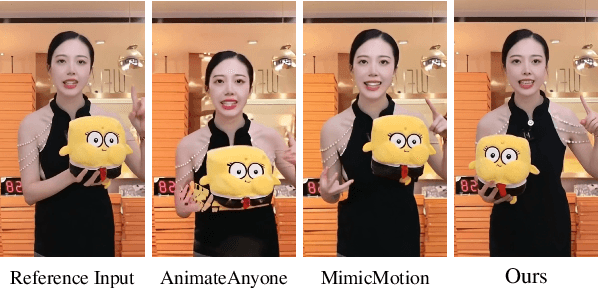
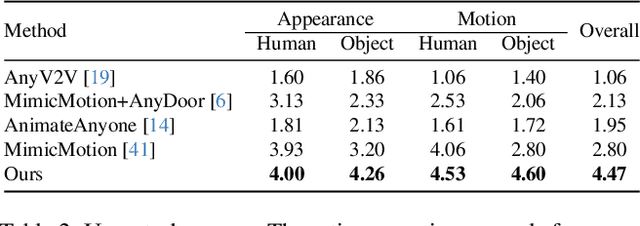
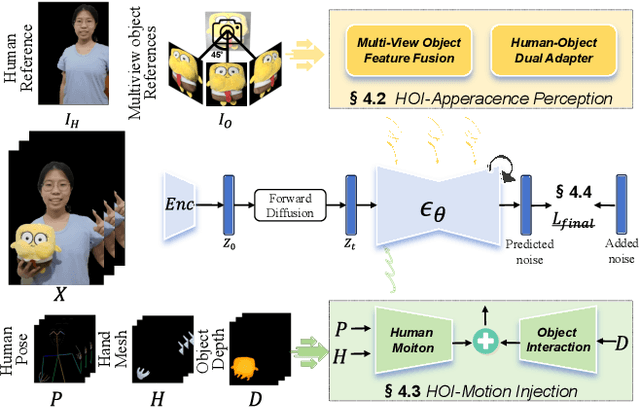
Abstract:The automatic generation of anchor-style product promotion videos presents promising opportunities in online commerce, advertising, and consumer engagement. However, this remains a challenging task despite significant advancements in pose-guided human video generation. In addressing this challenge, we identify the integration of human-object interactions (HOI) into pose-guided human video generation as a core issue. To this end, we introduce AnchorCrafter, a novel diffusion-based system designed to generate 2D videos featuring a target human and a customized object, achieving high visual fidelity and controllable interactions. Specifically, we propose two key innovations: the HOI-appearance perception, which enhances object appearance recognition from arbitrary multi-view perspectives and disentangles object and human appearance, and the HOI-motion injection, which enables complex human-object interactions by overcoming challenges in object trajectory conditioning and inter-occlusion management. Additionally, we introduce the HOI-region reweighting loss, a training objective that enhances the learning of object details. Extensive experiments demonstrate that our proposed system outperforms existing methods in preserving object appearance and shape awareness, while simultaneously maintaining consistency in human appearance and motion. Project page: https://cangcz.github.io/Anchor-Crafter/
Interactive Visual Assessment for Text-to-Image Generation Models
Nov 23, 2024Abstract:Visual generation models have achieved remarkable progress in computer graphics applications but still face significant challenges in real-world deployment. Current assessment approaches for visual generation tasks typically follow an isolated three-phase framework: test input collection, model output generation, and user assessment. These fashions suffer from fixed coverage, evolving difficulty, and data leakage risks, limiting their effectiveness in comprehensively evaluating increasingly complex generation models. To address these limitations, we propose DyEval, an LLM-powered dynamic interactive visual assessment framework that facilitates collaborative evaluation between humans and generative models for text-to-image systems. DyEval features an intuitive visual interface that enables users to interactively explore and analyze model behaviors, while adaptively generating hierarchical, fine-grained, and diverse textual inputs to continuously probe the capability boundaries of the models based on their feedback. Additionally, to provide interpretable analysis for users to further improve tested models, we develop a contextual reflection module that mines failure triggers of test inputs and reflects model potential failure patterns supporting in-depth analysis using the logical reasoning ability of LLM. Qualitative and quantitative experiments demonstrate that DyEval can effectively help users identify max up to 2.56 times generation failures than conventional methods, and uncover complex and rare failure patterns, such as issues with pronoun generation and specific cultural context generation. Our framework provides valuable insights for improving generative models and has broad implications for advancing the reliability and capabilities of visual generation systems across various domains.
Make-Your-Anchor: A Diffusion-based 2D Avatar Generation Framework
Mar 25, 2024



Abstract:Despite the remarkable process of talking-head-based avatar-creating solutions, directly generating anchor-style videos with full-body motions remains challenging. In this study, we propose Make-Your-Anchor, a novel system necessitating only a one-minute video clip of an individual for training, subsequently enabling the automatic generation of anchor-style videos with precise torso and hand movements. Specifically, we finetune a proposed structure-guided diffusion model on input video to render 3D mesh conditions into human appearances. We adopt a two-stage training strategy for the diffusion model, effectively binding movements with specific appearances. To produce arbitrary long temporal video, we extend the 2D U-Net in the frame-wise diffusion model to a 3D style without additional training cost, and a simple yet effective batch-overlapped temporal denoising module is proposed to bypass the constraints on video length during inference. Finally, a novel identity-specific face enhancement module is introduced to improve the visual quality of facial regions in the output videos. Comparative experiments demonstrate the effectiveness and superiority of the system in terms of visual quality, temporal coherence, and identity preservation, outperforming SOTA diffusion/non-diffusion methods. Project page: \url{https://github.com/ICTMCG/Make-Your-Anchor}.
Dance Your Latents: Consistent Dance Generation through Spatial-temporal Subspace Attention Guided by Motion Flow
Oct 20, 2023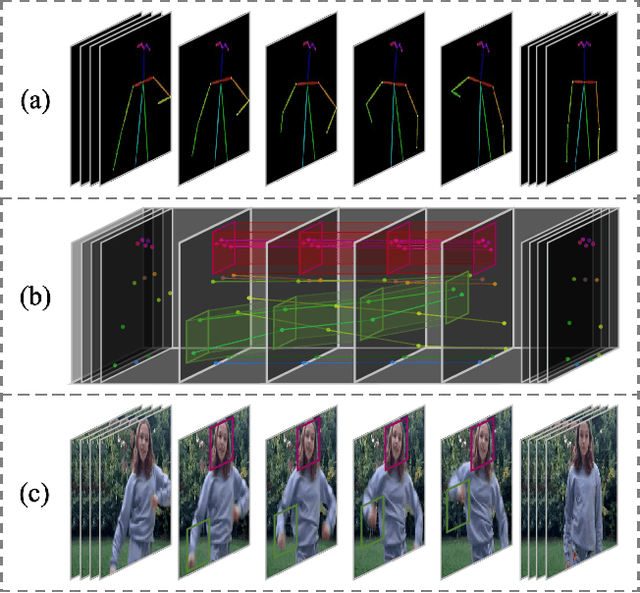

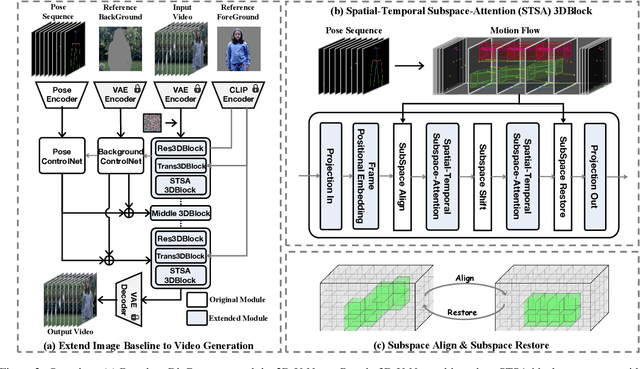
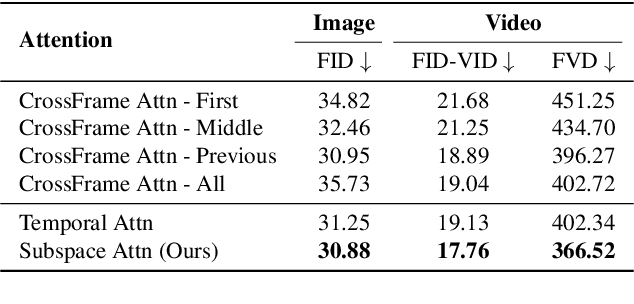
Abstract:The advancement of generative AI has extended to the realm of Human Dance Generation, demonstrating superior generative capacities. However, current methods still exhibit deficiencies in achieving spatiotemporal consistency, resulting in artifacts like ghosting, flickering, and incoherent motions. In this paper, we present Dance-Your-Latents, a framework that makes latents dance coherently following motion flow to generate consistent dance videos. Firstly, considering that each constituent element moves within a confined space, we introduce spatial-temporal subspace-attention blocks that decompose the global space into a combination of regular subspaces and efficiently model the spatiotemporal consistency within these subspaces. This module enables each patch pay attention to adjacent areas, mitigating the excessive dispersion of long-range attention. Furthermore, observing that body part's movement is guided by pose control, we design motion flow guided subspace align & restore. This method enables the attention to be computed on the irregular subspace along the motion flow. Experimental results in TikTok dataset demonstrate that our approach significantly enhances spatiotemporal consistency of the generated videos.
Deepfake Network Architecture Attribution
Mar 14, 2022



Abstract:With the rapid progress of generation technology, it has become necessary to attribute the origin of fake images. Existing works on fake image attribution perform multi-class classification on several Generative Adversarial Network (GAN) models and obtain high accuracies. While encouraging, these works are restricted to model-level attribution, only capable of handling images generated by seen models with a specific seed, loss and dataset, which is limited in real-world scenarios when fake images may be generated by privately trained models. This motivates us to ask whether it is possible to attribute fake images to the source models' architectures even if they are finetuned or retrained under different configurations. In this work, we present the first study on Deepfake Network Architecture Attribution to attribute fake images on architecture-level. Based on an observation that GAN architecture is likely to leave globally consistent fingerprints while traces left by model weights vary in different regions, we provide a simple yet effective solution named DNA-Det for this problem. Extensive experiments on multiple cross-test setups and a large-scale dataset demonstrate the effectiveness of DNA-Det.
Progressive Domain Expansion Network for Single Domain Generalization
Mar 30, 2021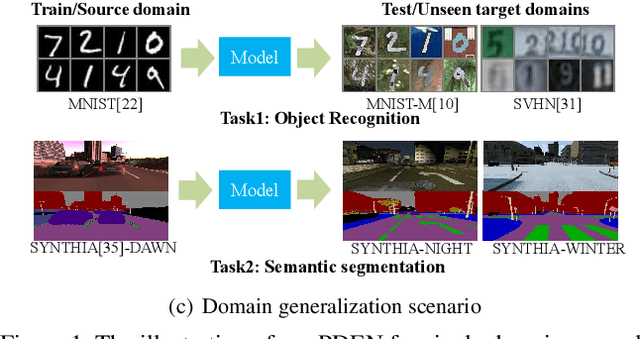

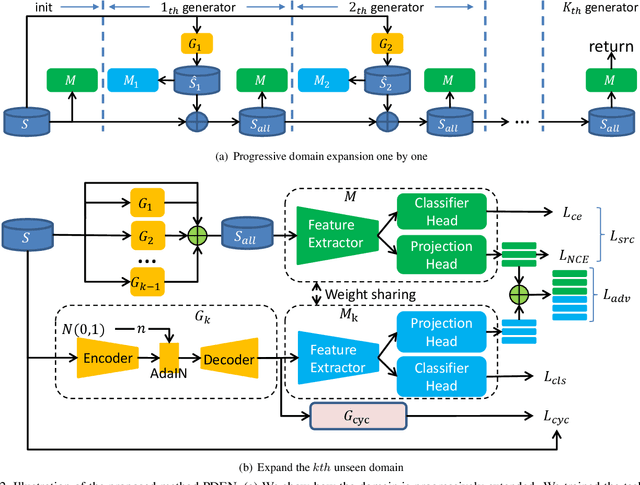
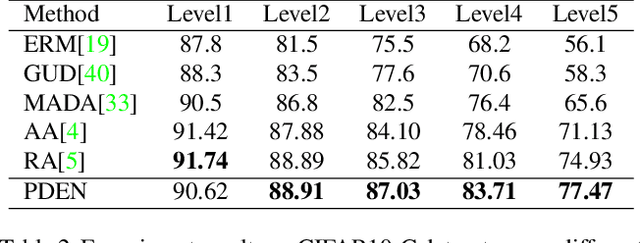
Abstract:Single domain generalization is a challenging case of model generalization, where the models are trained on a single domain and tested on other unseen domains. A promising solution is to learn cross-domain invariant representations by expanding the coverage of the training domain. These methods have limited generalization performance gains in practical applications due to the lack of appropriate safety and effectiveness constraints. In this paper, we propose a novel learning framework called progressive domain expansion network (PDEN) for single domain generalization. The domain expansion subnetwork and representation learning subnetwork in PDEN mutually benefit from each other by joint learning. For the domain expansion subnetwork, multiple domains are progressively generated in order to simulate various photometric and geometric transforms in unseen domains. A series of strategies are introduced to guarantee the safety and effectiveness of the expanded domains. For the domain invariant representation learning subnetwork, contrastive learning is introduced to learn the domain invariant representation in which each class is well clustered so that a better decision boundary can be learned to improve it's generalization. Extensive experiments on classification and segmentation have shown that PDEN can achieve up to 15.28% improvement compared with the state-of-the-art single-domain generalization methods.
CoUAV: A Cooperative UAV Fleet Control and Monitoring Platform
Apr 08, 2019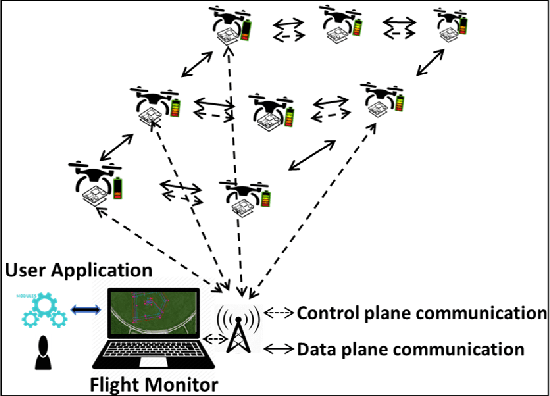
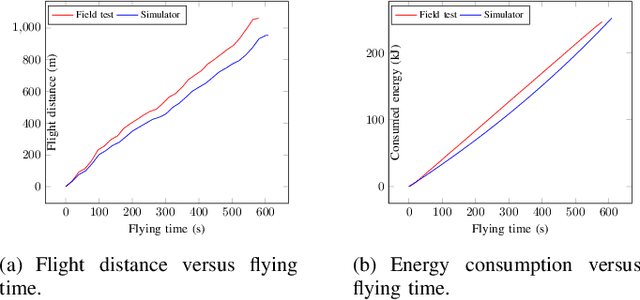
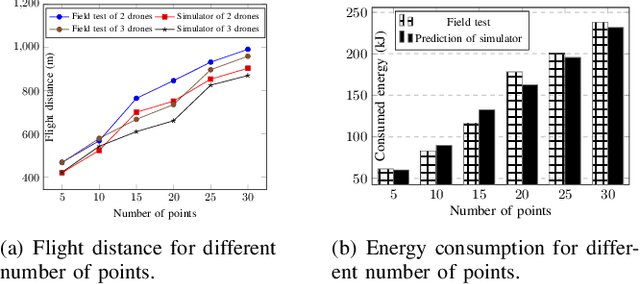
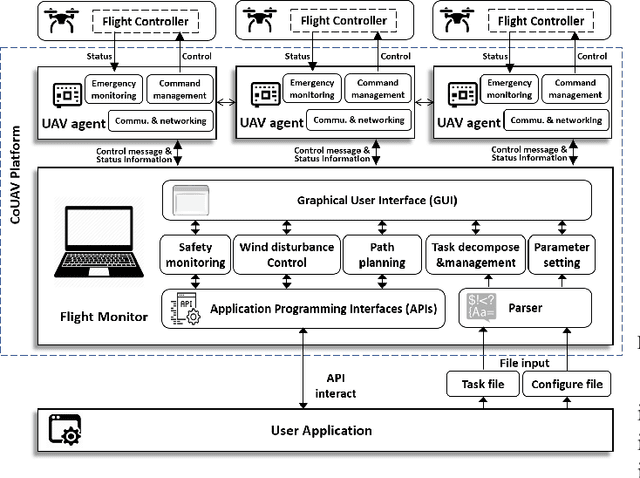
Abstract:In the past decade, unmanned aerial vehicles (UAVs) have been widely used in various civilian applications, most of which only require a single UAV. In the near future, it is expected that more and more applications will be enabled by the cooperation of multiple UAVs. To facilitate such applications, it is desirable to utilize a general control platform for cooperative UAVs. However, existing open-source control platforms cannot fulfill such a demand because (1) they only support the leader-follower mode, which limits the design options for fleet control, (2) existing platforms can support only certain UAVs and thus lack of compatibility, and (3) these platforms cannot accurately simulate a flight mission, which may cause a big gap between simulation and real flight. To address these issues, we propose a general control and monitoring platform for cooperative UAV fleet, namely, CoUAV, which provides a set of core cooperation services of UAVs, including synchronization, connectivity management, path planning, energy simulation, etc. To verify the applicability of CoUAV, we design and develop a prototype and we use the new system to perform an emergency search application that aims to complete a task with the minimum flying time. To achieve this goal, we design and implement a path planning service that takes both the UAV network connectivity and coverage into consideration so as to maximize the efficiency of a fleet. Experimental results by both simulation and field test demonstrate that the proposed system is viable.
 Add to Chrome
Add to Chrome Add to Firefox
Add to Firefox Add to Edge
Add to Edge